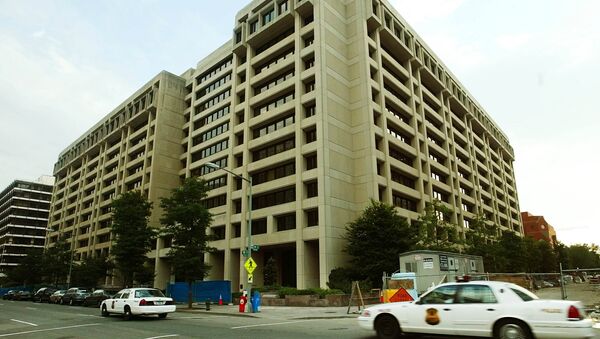"The Fund does maintain a policy of non-toleration of arrears to official bilateral creditors. This policy requires the elimination of existing arrears and the non-accumulation of new arrears during the program period with respect to official creditors," IMF spokesman William Murray told reporters on Thursday.
"If I’m not mistaken, the $3 billion euro bond comes from the Russian Sovereign Wealth Fund," said Murray, responding to a question on whether the IMF considers the loan from Russia to be official or corporate credit.
In December 2013, Russia purchased Ukrainian Eurobonds worth $3 billion with two years to maturity, the first tranche of a proposed $15 billion deal to help the country financially.
Under the conditions of the loan, Russia is entitled to call in the loan if Ukraine does not adhere to its conditions, one of which is that Ukraine's national debt does not exceed 60 percent of GDP. However, in 2014 the country's national debt rose to 72 percent of GDP, and is expected to reach more than 80 percent this year. If the country doesn't meet the loan's conditions, it reverts to a state of "technical default" and must pay back the entirety of the sum immediately.
However, in January a source in the government told RIA Novosti that Russia may be forced to ask for the loan back before the December date of maturity due to Ukraine's changing economic circumstances. "The way the economic and financial situation in Ukraine is shaping up, a number of parameters which serve as conditions for the loan are being violated. In these circumstances it is very likely that Russia will be forced to call in the loan in the near future," said the source.
The financial plan announced by the IMF in February obliges Kiev to restructure at least $15.3 billion of outstanding debt in order to receive money from the $17.5 billion, four-year Extended Fund Facility which was issued to support the country financially. Earlier this month the Ukrainian Finance Ministry announced that it had received the first tranche of $5 billion, of which $2.2 billion went into government funds, and $2.8 billion to the central bank.




